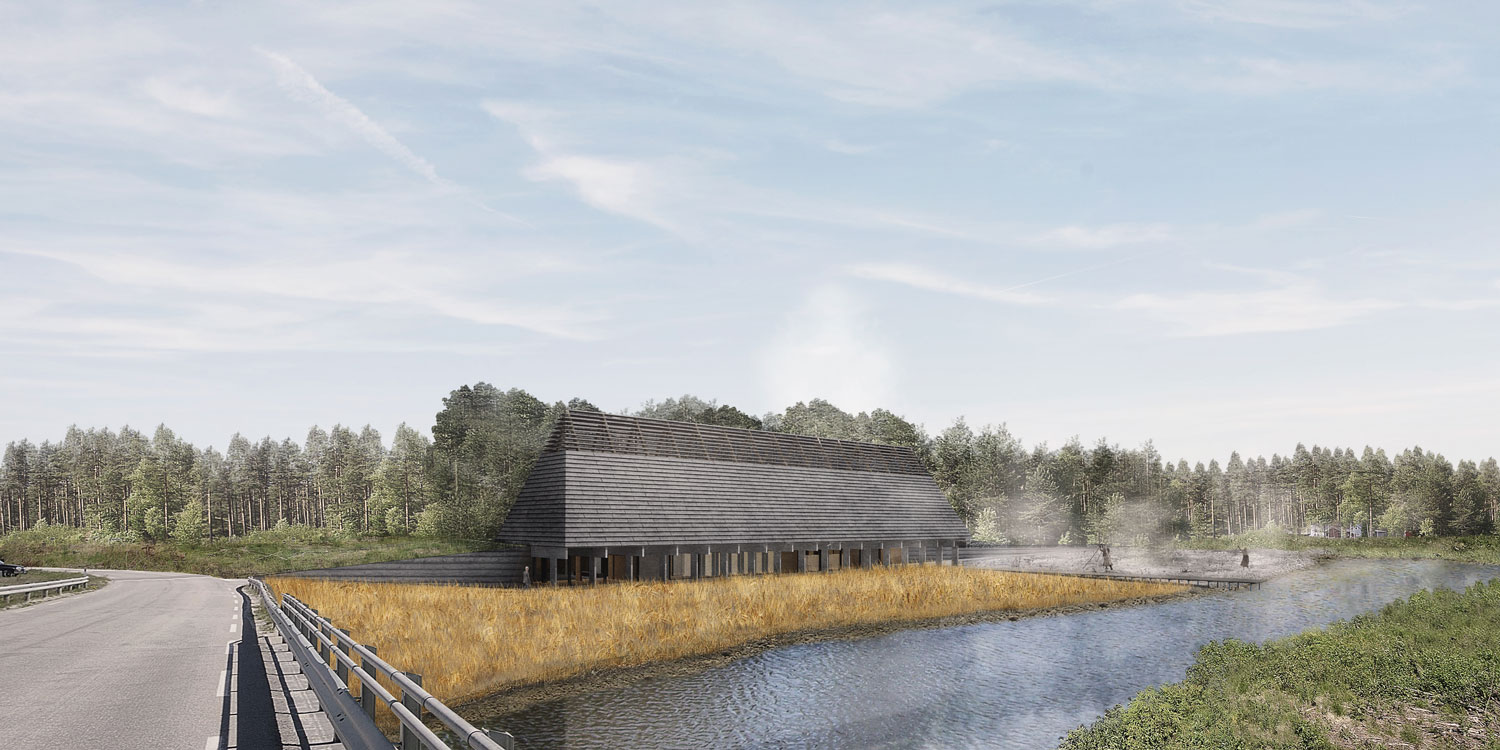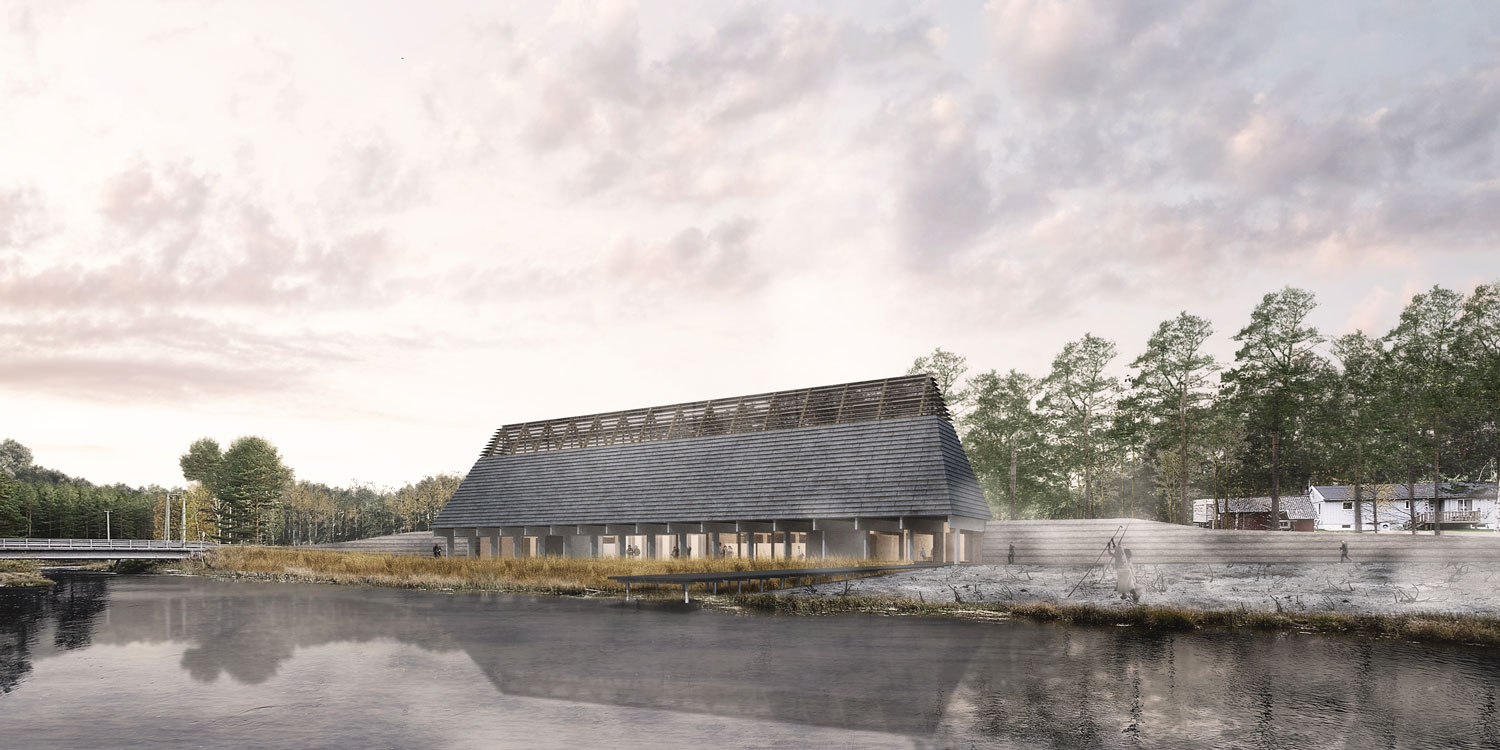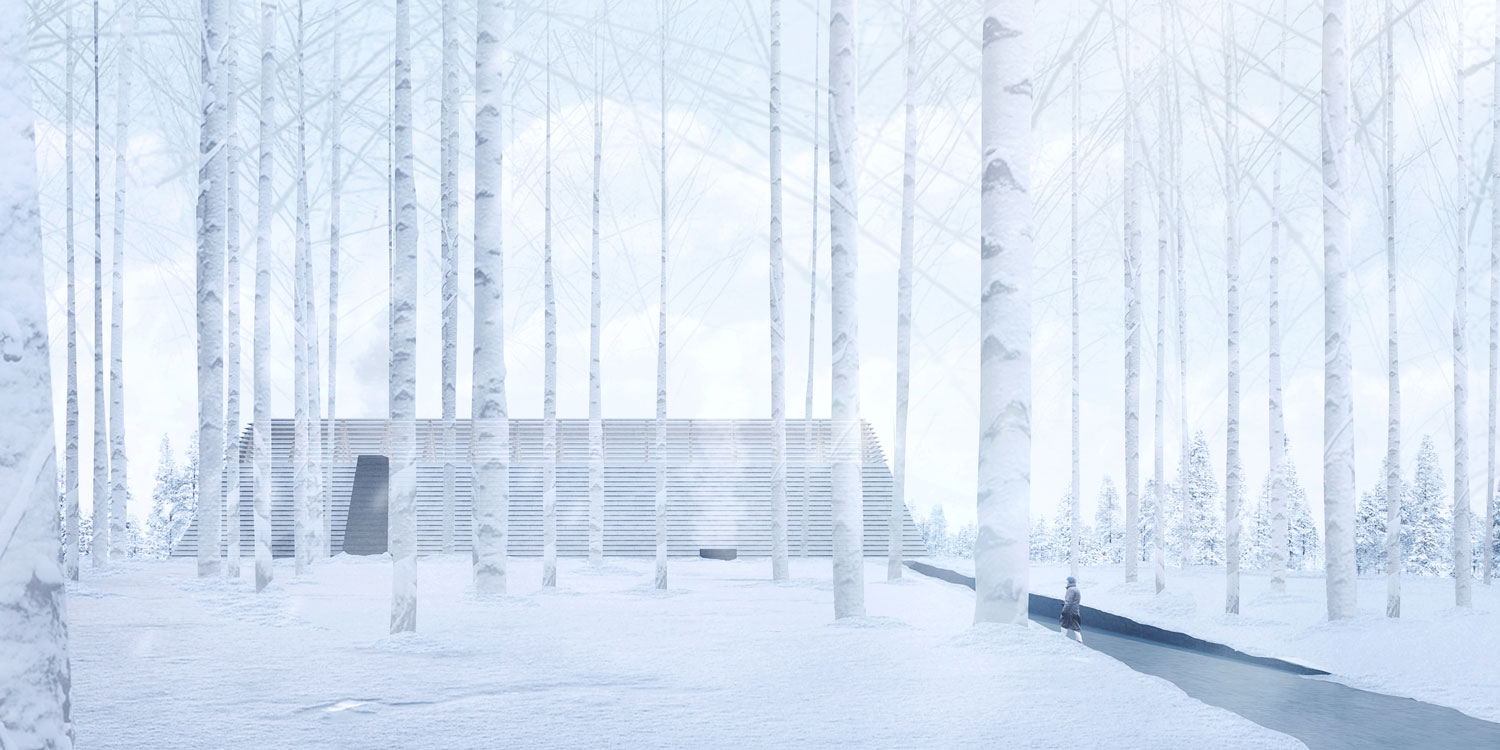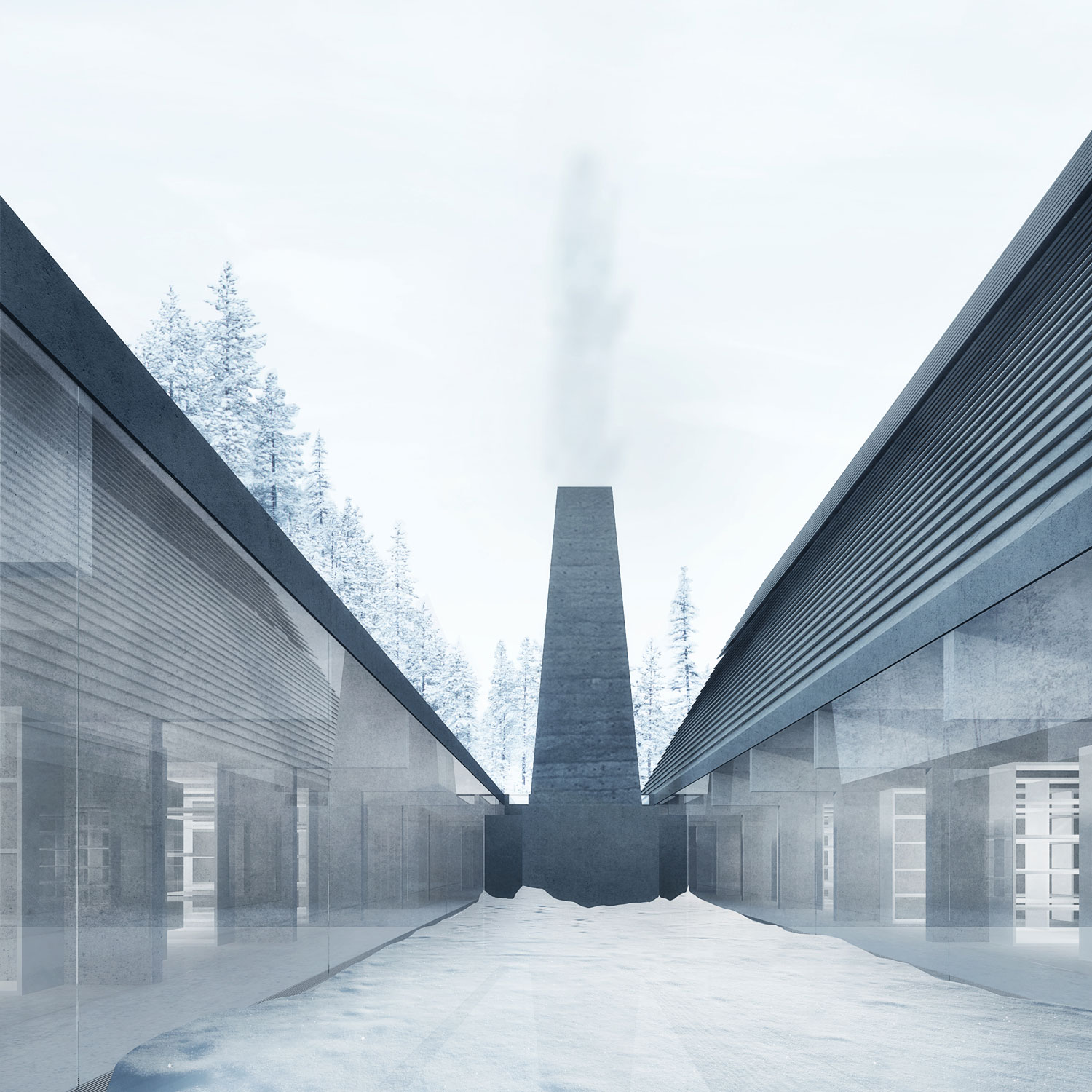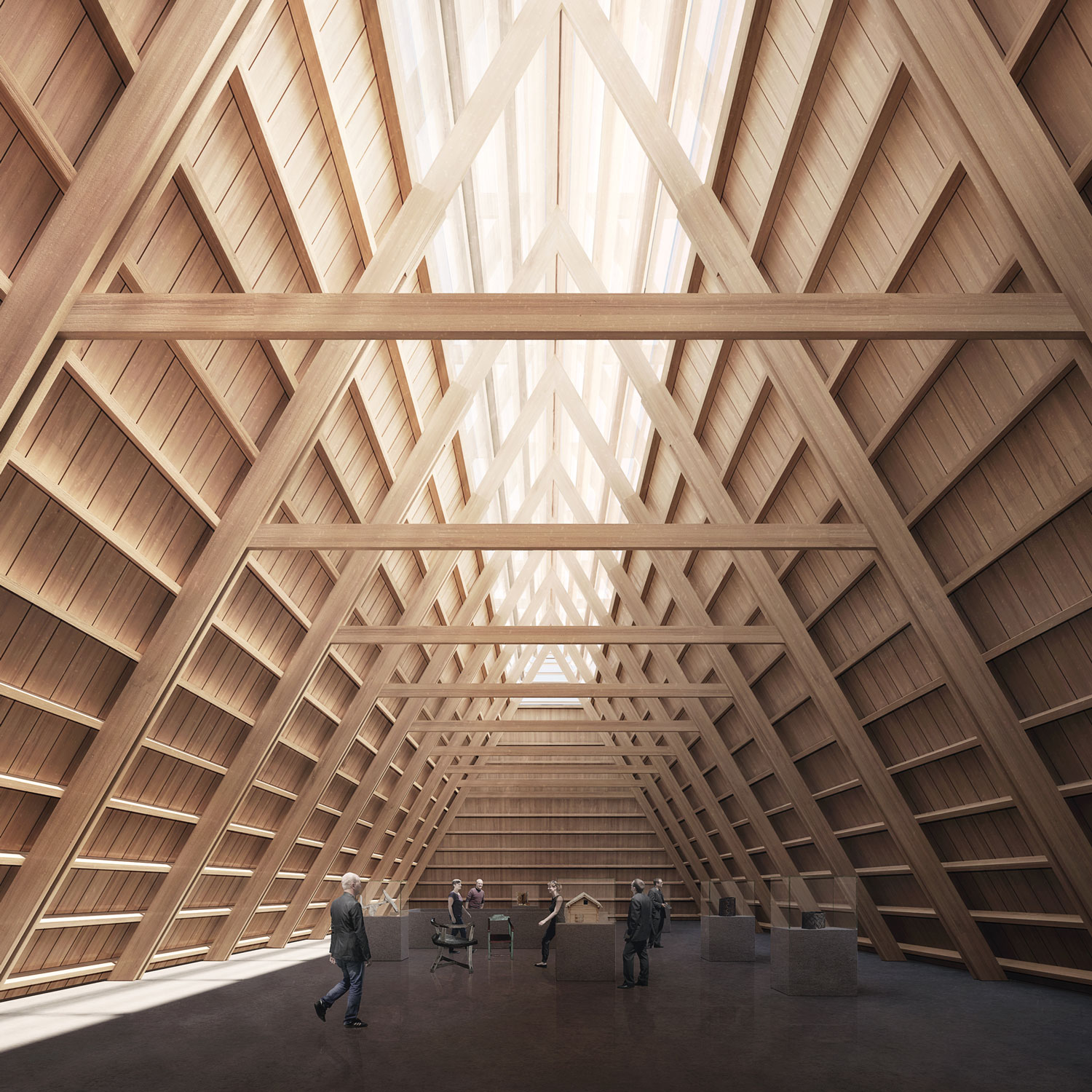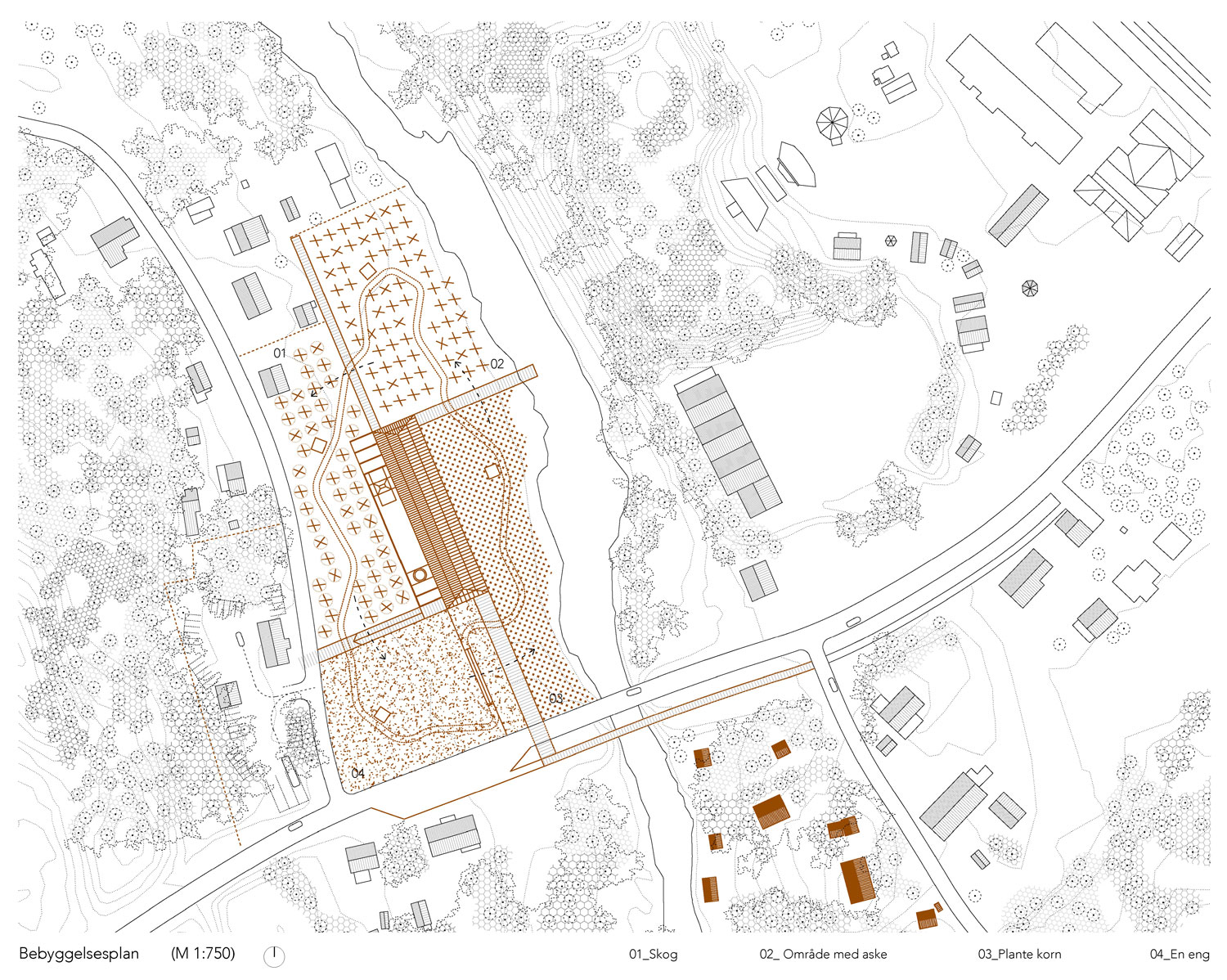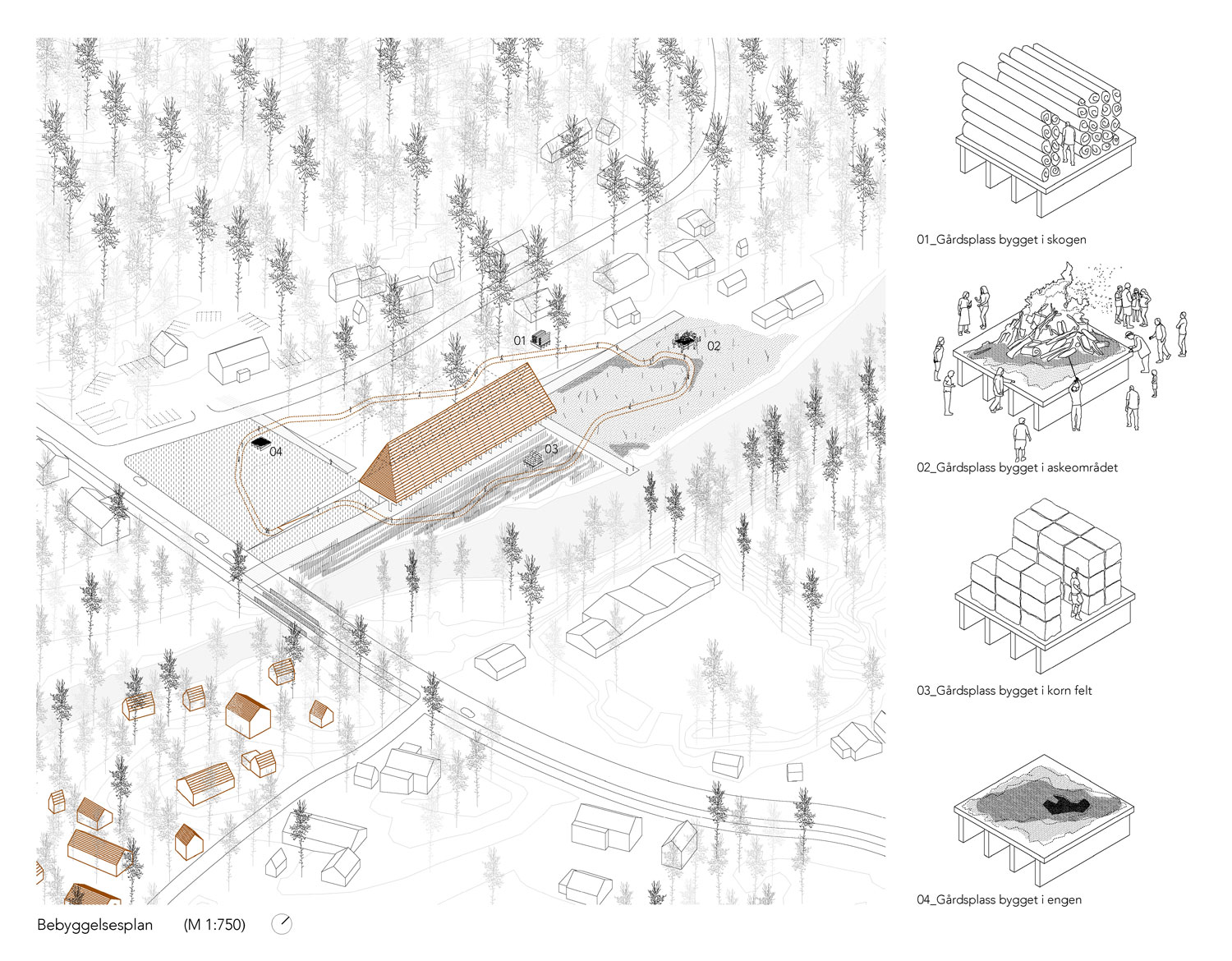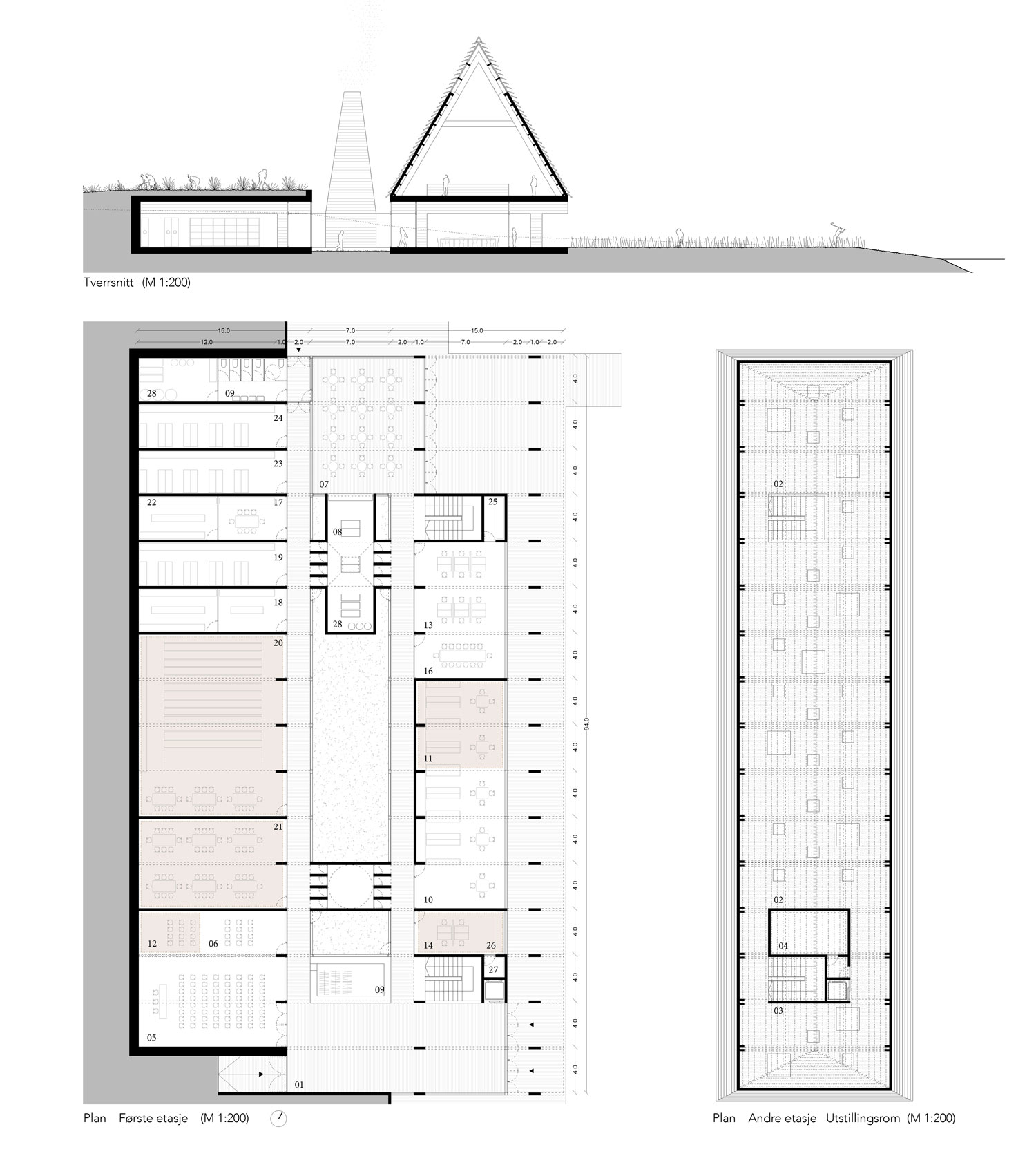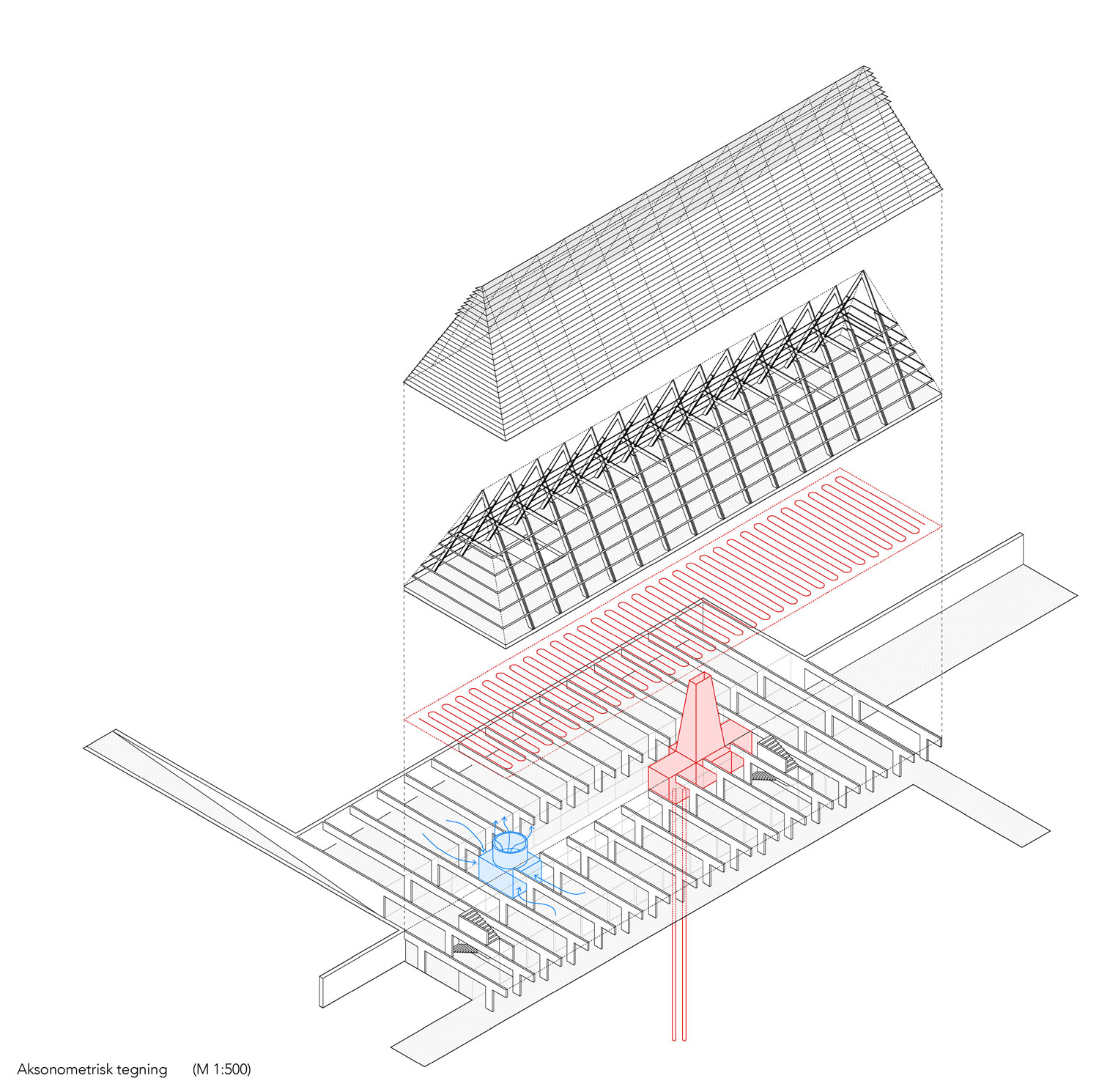2147-AUL.DTM-NO-2017
Client: Norske Arkitekters Landsforbund
Status: Competition (2017)
Location: Svullrya, Norway
Coordinates: 60.417260, 12.399540
Climate: Artic / polar, Cold
Materials: Wood, Stone
Environments: Forest, Riverside
Visualizer: Beta Collective
Scale: Medium
Types: Cultural, Museum
The goal of Norsk Skogfinsk Museum is to house under a single roof the great collections that document the history of the Norwegian national minority, the Skogfinner. Furthermore, the Norsk Skogfinsk Museum will be a fundamental tool to preserve, study and disseminate the history and culture of the Skogfinske forests.
«Markens Grode”’s goal is that people who visit the Museum experience for some time the world and the atmosphere of the Skogfinner’s daily live. In order to engage with this experience, the container is as important as what goes into it. The content is the collection of objects, photos, books and archives that will be exhibited in the building. While the container is the whole site and the building in it. The Norsk Skogfinsk Museum is the convergence of these three parts: site, building and collection.
The collection is made up of objects to be showed and studied inside a showcase, protected from the environment and the public. On the other hand, the site and the building are places to feel Skogfinner’s world through all the senses. The site and the building materialise and upgrade the core elements from the local culture and history, transforming them into built matter.
Their culture is shown in two episodes of the daily life of this ethnic collective: work in the forest and domestic life. The farmers’ activity was the svedjebruk (slash-and-burn cultivation) in which we can highlight three periods: search in the forest, the svedjebruk and sowing the grain. The home life was placed in three different constructions: Røykstue, Røykbadstue and Rie. “Markens Grode” proposal is based in this daily life, and builds on those constructions.
Outdoors enclosures
Outside and around the new museum building, the visitor moves into the atmosphere in which the Skogfinner worked. As a living sample of their natural ecosystem, the site has been organised into four ecosystems. Each of them show a stage of their forest into field transformation process.
Each of these areas are delimited by paths, made of reinforced concrete, elevating over the natural ground, allowing permeability between areas, and giving the visitor different points of view of the complex ecosystem of the museum. At the same time, these paths give access from the edges of the site into the building.
The experience of the Norsk Skogfinsk Museum starts on the exterior area, where a forest welcomes the visitors on the parking lot. This first enclosure shows the forest before its transformation with the svedjebruk technique. Walking in the clockwise direction the second exterior area is a field of ashes, the letovers of the burnt forest. The third area is a cereal field. The forth area is a meadow which is the beginning of the forest regrowth.
The vegetal areas are gardens in movement: every five years an anticlockwise rotation transformation will be held on them. Chopping down the forest and burning it into ashes. Planting cereals in the ashes field. Letting the cereal fields turn into a meadow. And the meadow into a forest. Due to this, the visitor will see the full cycle of the Skogfinner agricultural process.
In the center of each enclosure, an open yard is built with the same materials than the building basement. Its roofs are transformed every five years using the leftovers of the harvesting endeavours. These yards are communicated between them by a wooden paths network. The yards have the same dimensions as some of the houses on the Skogfinner village.
The building
The building is a big roof that floats above the land, sheltering and gathering all the Skogfinner’s collections. This large roof hides underneath it a world of archaic atmospheres, resounding on each visitor the Skogfinner’s domestic life and rebuilding structures that define their identity such as the sauna house (Røykbadstue), hearth cores such as the smoke houses (Røykstue), porches that protect from the big snowfalls, big empty barns underneath roofs (Rie). A world of atmospheres and useful analogies that allow the visitor to live with its own senses as a Skogfinner.
The building follows the same logic as their small rural structures, build with rigour and a logic that adapted to their particular time and place. Our proposal works with these same logics. The three archetypical Skogfinner house elements define the anatomy of the museum:
– A stone base that connects and separates the rest of the building from the soil, in which we place all the private areas, used as storage spaces.
– A central core that houses two massive and hollow structures: the fire-patio, a huge reconstruction of the ancient smoke house hearth, that becomes the museum’s heat core, and the snow patio, that becomes a large ventilation duct. These two structures also filter the low nordic light into the center of the building in a series of magical effects. These two moments take the visitor back in time, so she can experience the specific relation of the Skogfinners with fire and water.
– A third volume, resembling a big barn and the Skogfinners houses roofs, stands on some concrete ribs that organise all the basement spaces. This volume is made of a big porch -half of it climatized to house the entrance hall and library, half of it just open to welcome summer activities in it- and a large roof, built with prefabricated engineered timber, that houses the big exhibition hall and the temporary exhibitions hall.
Program
The strategy is to have one single building that gives an answer to both construction phases. The volume built on phase one is not altered in phase two. There is two kind of spaces in phase two:
– Those who need an entire new space. They will be located on a big patio on the underground side. A new roof and services will be required.
– Those that require minor works, such as the library. These will need new walls, finishes and services.
The program layout allows flexibility between spaces such as library and lecture hall. All the spaces on the big porch can open up in summer, and they can eventually be moved to the yards on each outdoor enclosure.
